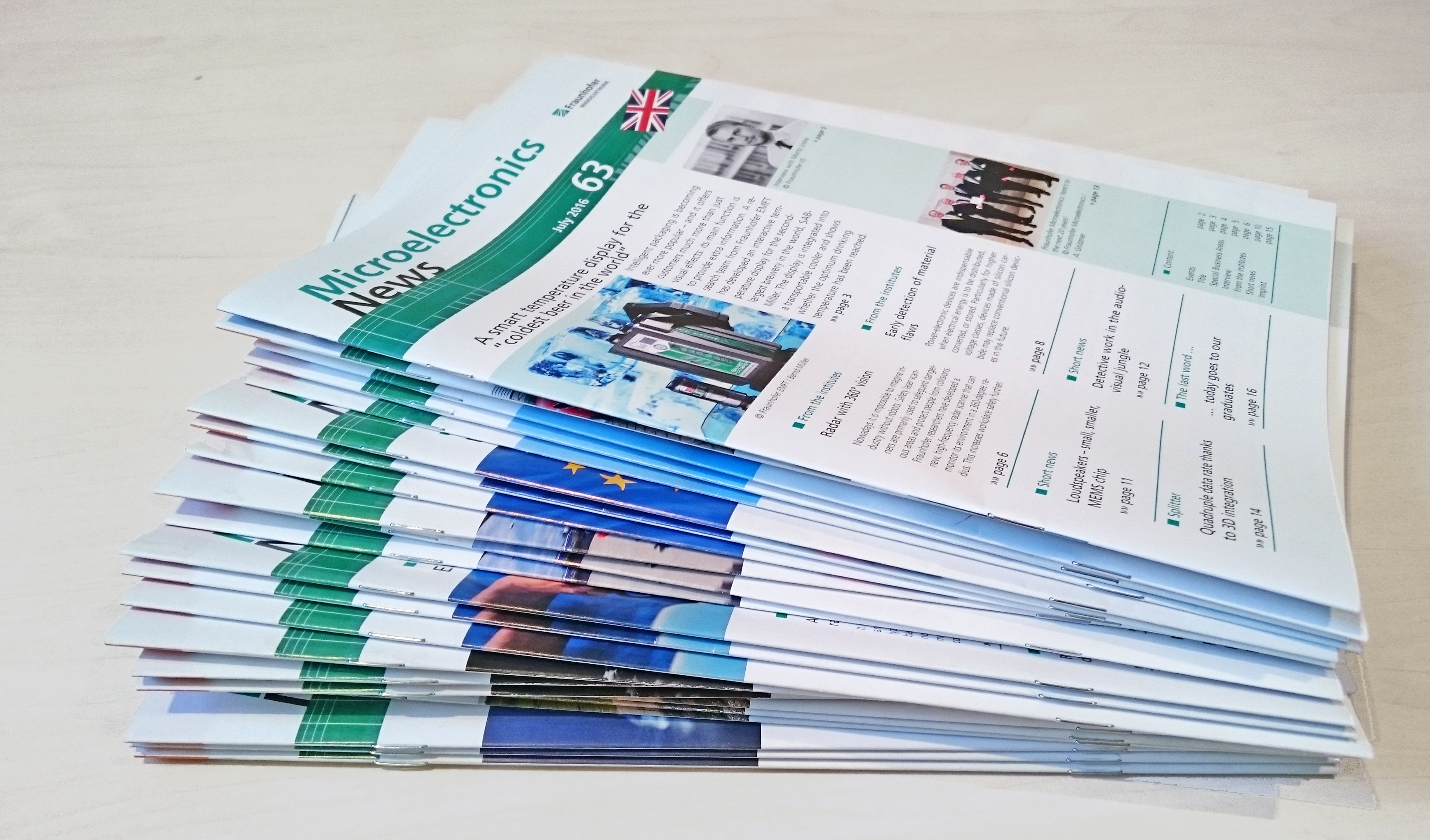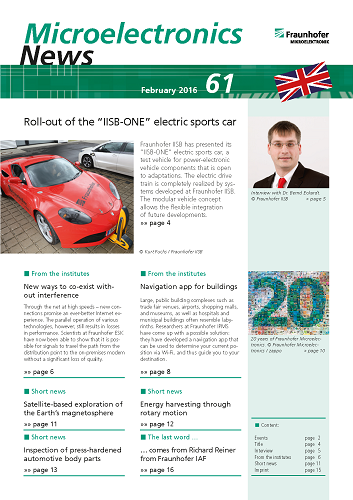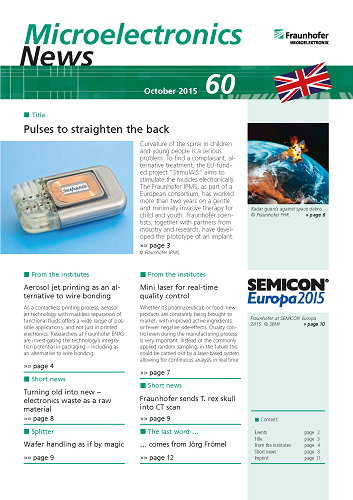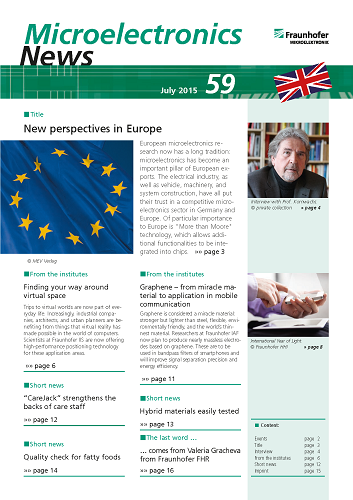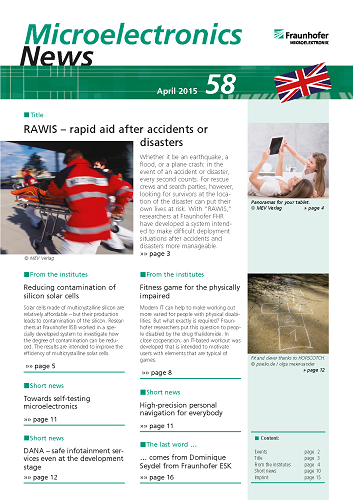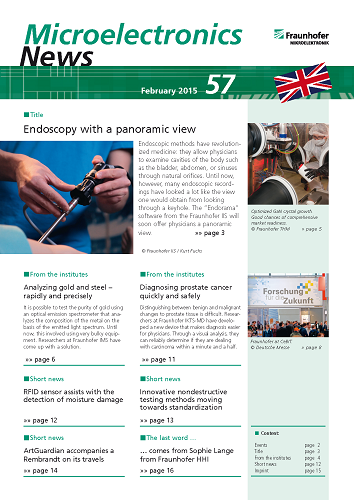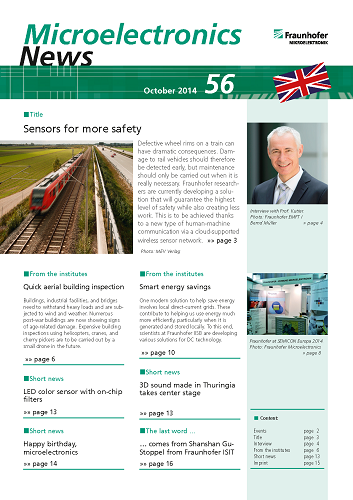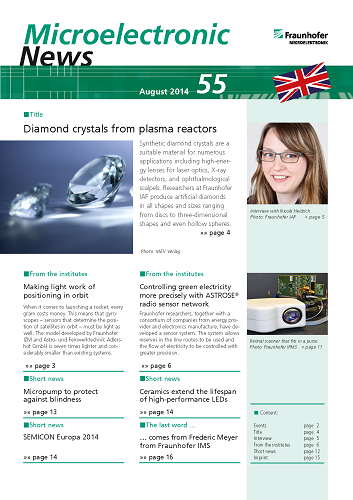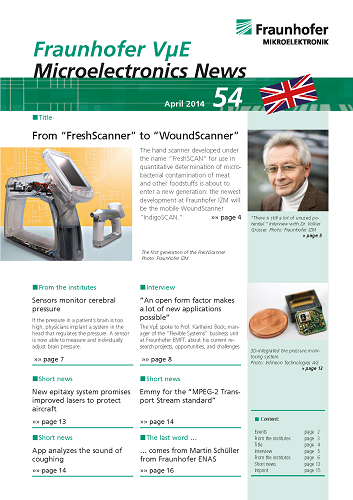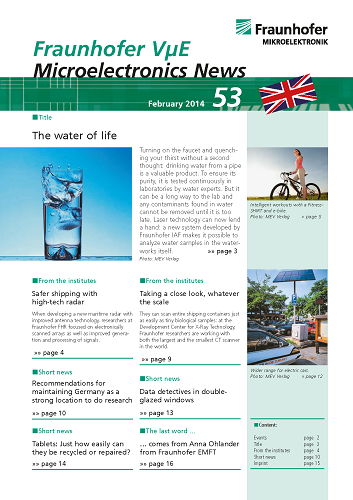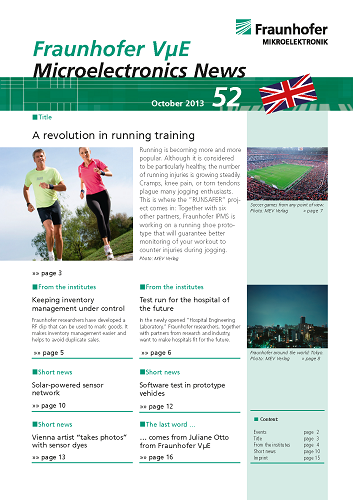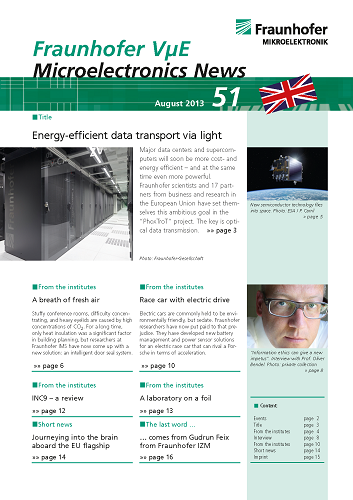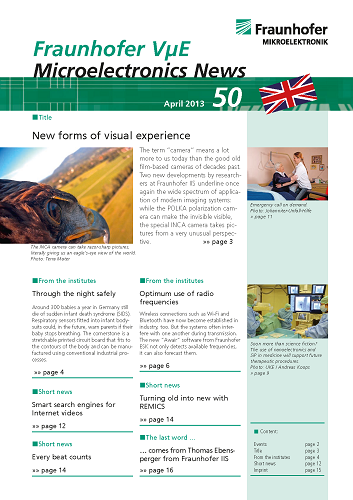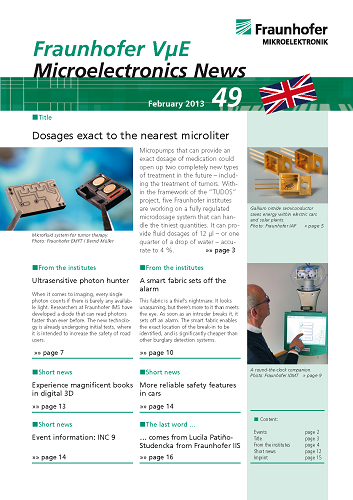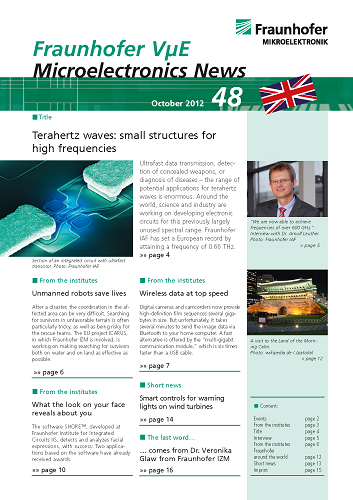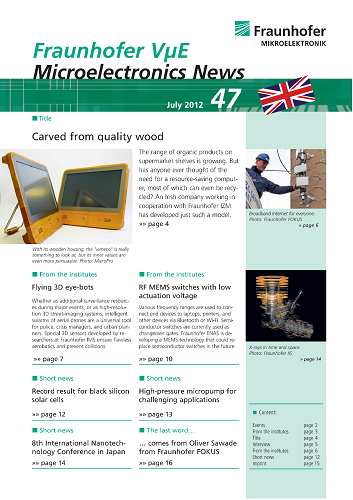Nr. 82 / June 2021
Dear readers,
Welcome to the summer edition of Microelectronics News. This is the first time that our Group magazine has looked beyond the boundaries of the Fraunhofer Group for Microelectronics to include the collaboration known as the Research Fab Microelectronics Germany (FMD), with all of its partners from the Fraunhofer-Gesellschaft and the Leibniz Association.
In the current edition, experts within FMD and the Group offer an insight into their work under the slogan “People. Make. Microelectronics.”: We speak to researchers and employees from all cooperation partners within FMD about pioneering technologies and gain a better understanding of their everyday work.
In total, some 3,500 researchers within FMD seek answers to key scientific and societal questions on a daily basis: What technologies and innovative electronic systems can we use to tackle the challenges of our time? Artificial intelligence (AI), Industry 4.0, smart living, or driverless cars – all of these digital developments require new methods, processes, and business models for the transmission, storage, and processing of data. Where and how can microelectronics be used as an enabling technology to provide powerful, trustworthy, and resource-efficient support?
So, without further ado, we invite you to join us on a journey of discovery through our institutes. We hope you enjoy reading this edition of Microelectronics News!
